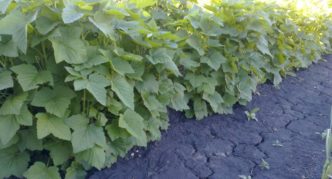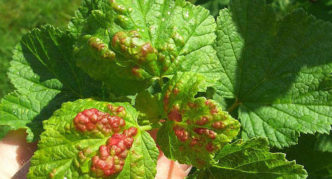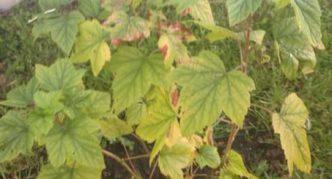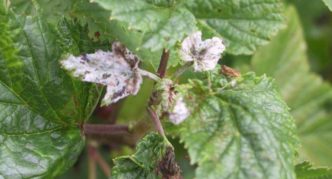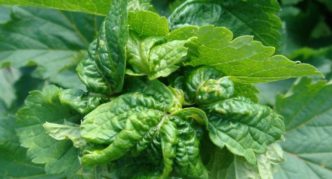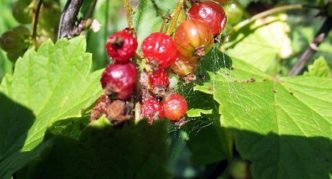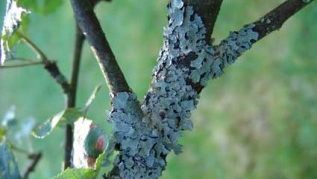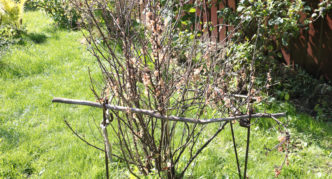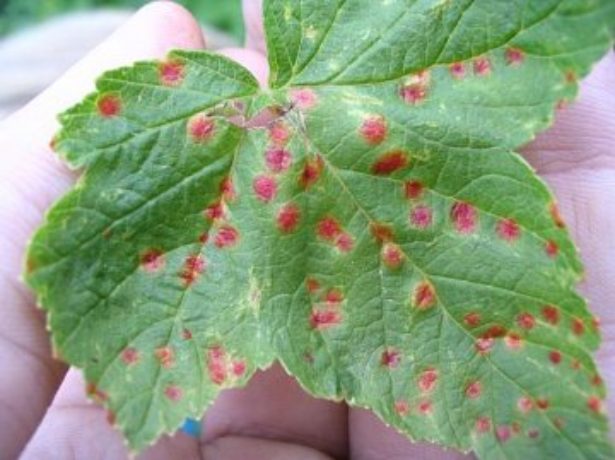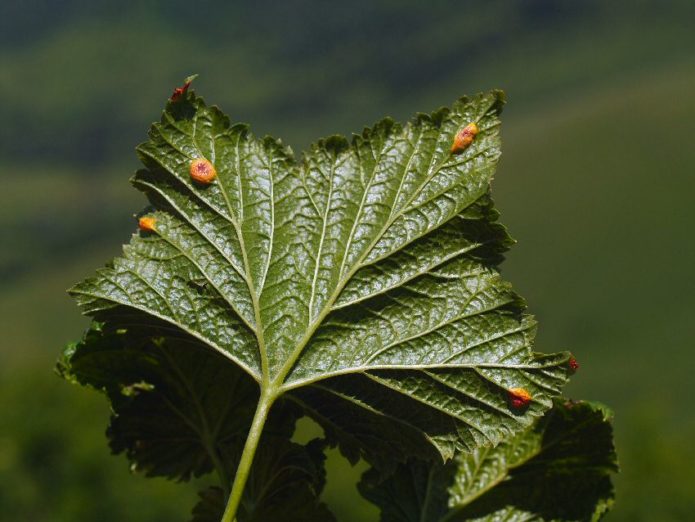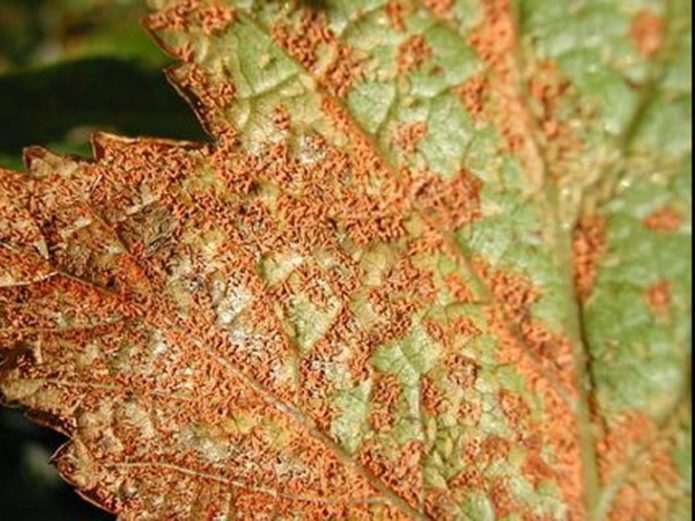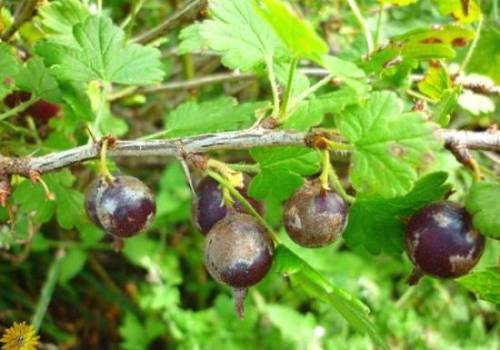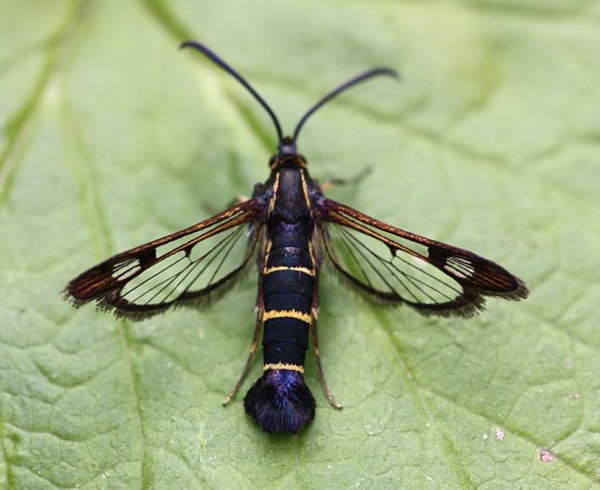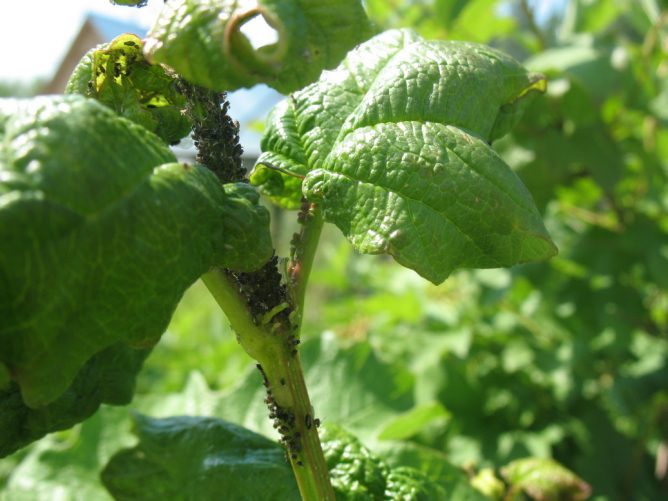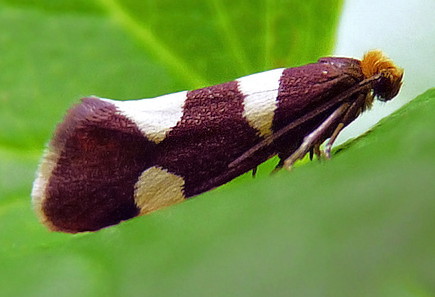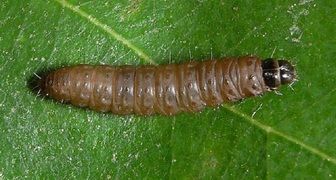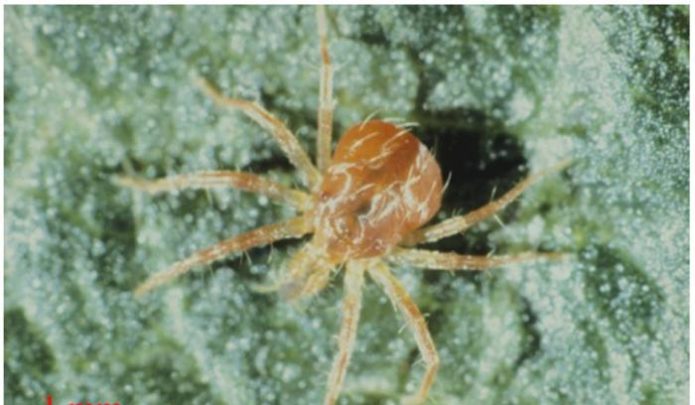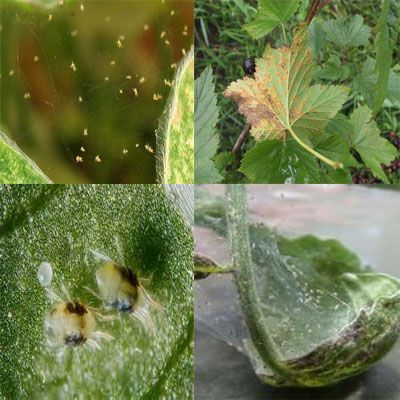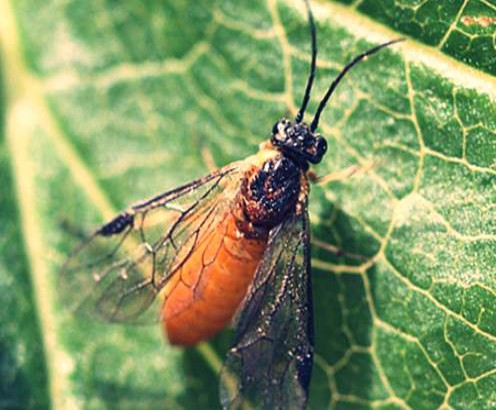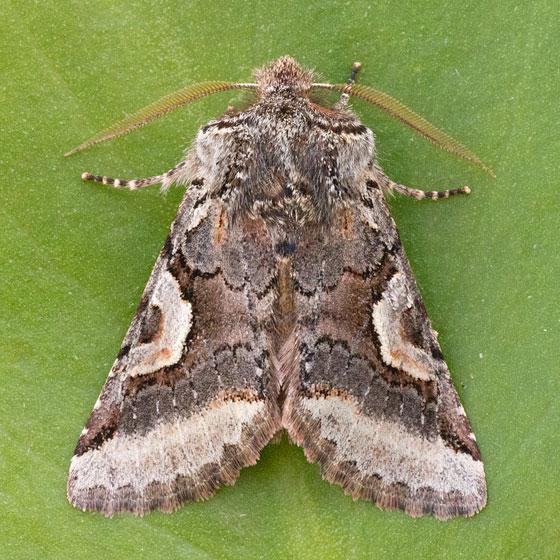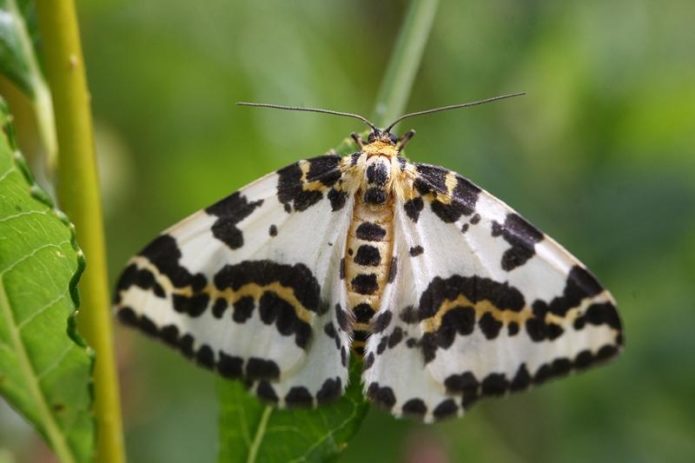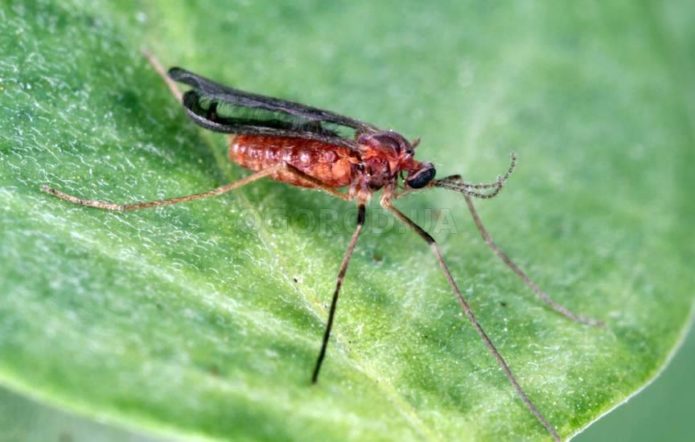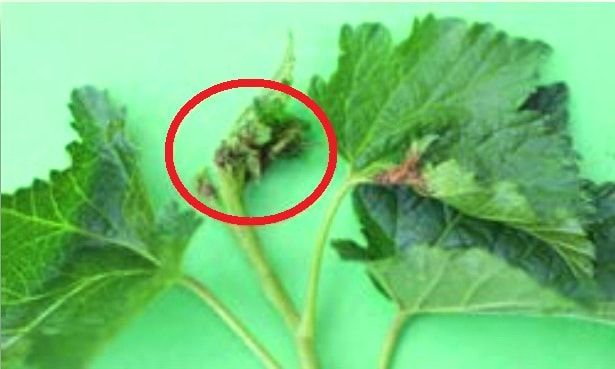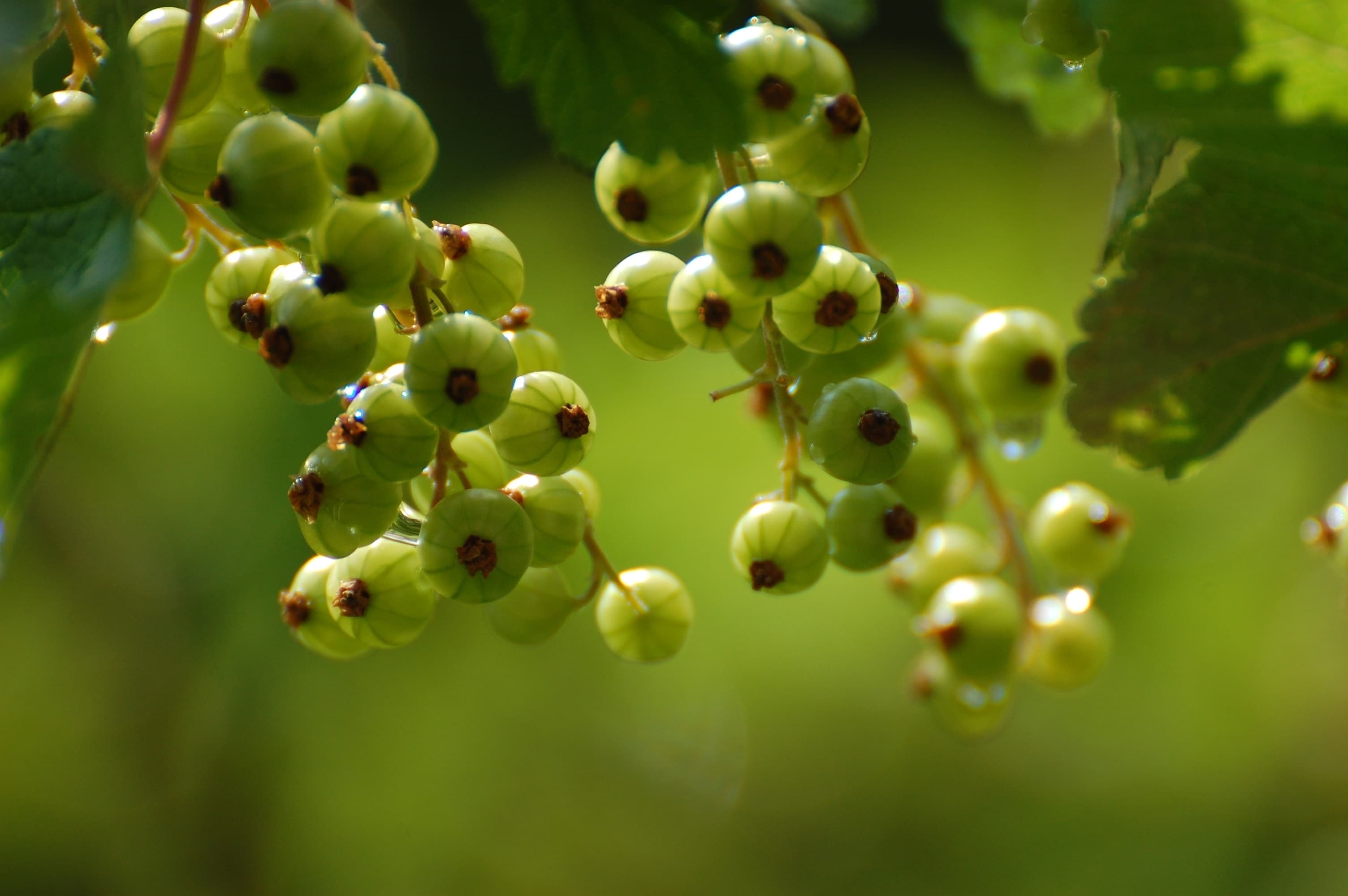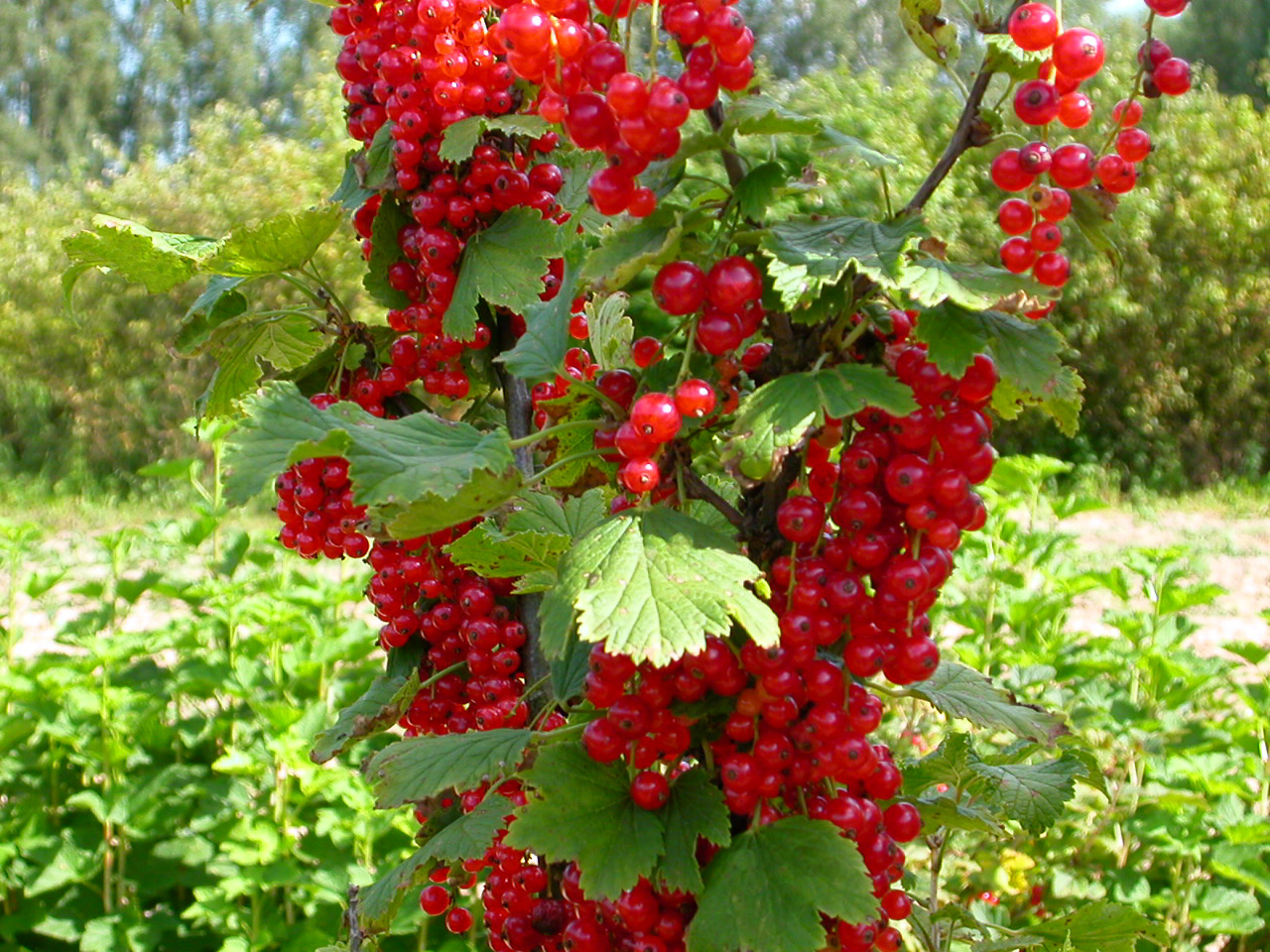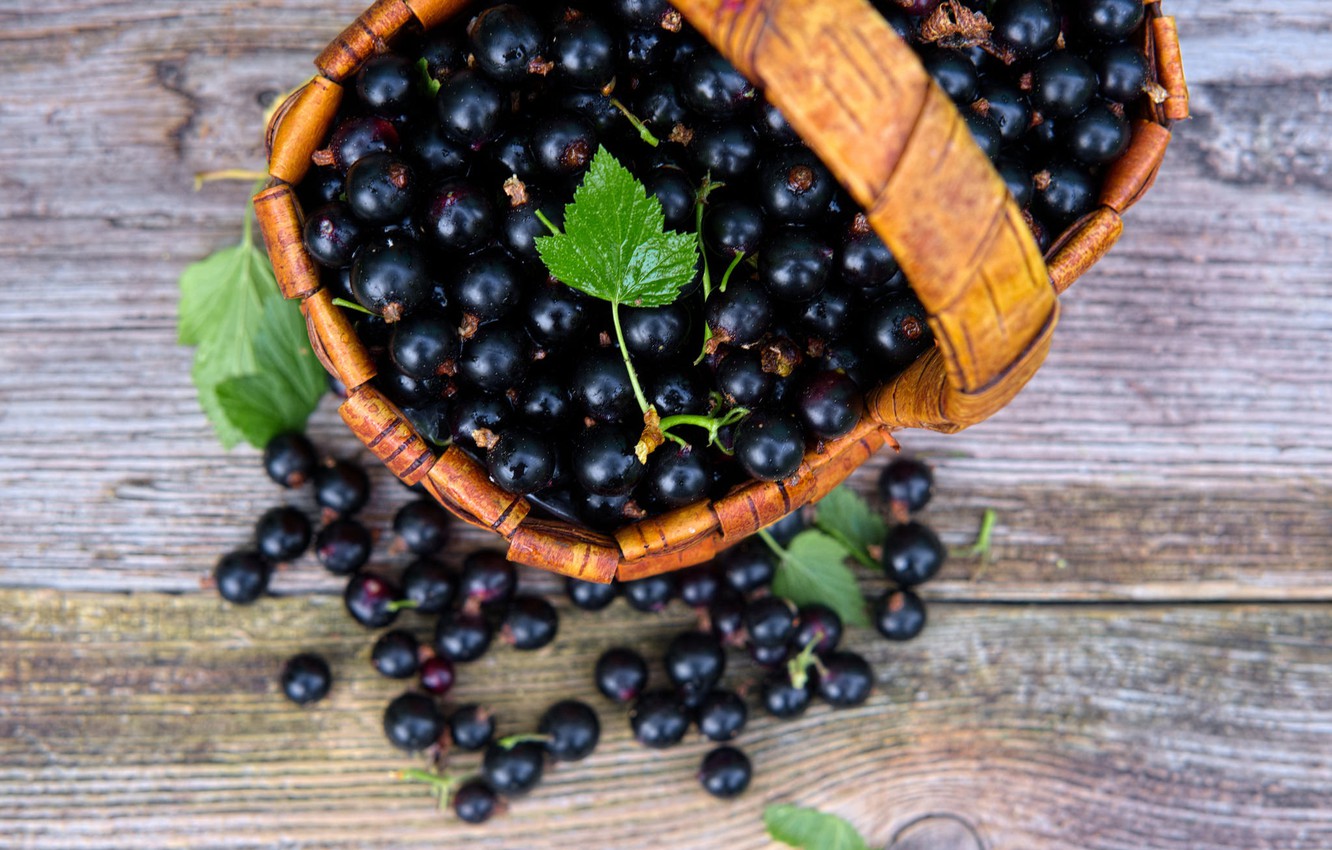Currants - black, red, white, as well as pink and golden - are an unpretentious berry bush that has long been loved by Russian gardeners. There are many varieties of it, and breeders are constantly developing new varieties with improved characteristics, including those with genetically built immunity against certain diseases or not being affected by a certain type of pest. But they are not yet able to completely protect the culture from attacks of pathogenic fungi, viruses, bacteria, insects. Therefore, the gardener must be able to recognize suspicious symptoms in time, identify the problem and deal with it.
Content
Symptoms to Watch Out for
Like other garden crops, currant bushes are recommended to be regularly inspected in order to notice suspicious signs in time and have time to take appropriate measures. If it is infected with a pathogenic fungus, virus, bacterium, or has been attacked by pests, it is better to detect it at an early stage, when the problem can still be dealt with without resorting to “heavy artillery” in the form of powerful chemicals. Moreover, various diseases can manifest themselves in a similar way. Often, similar signs indicate certain care errors. The gardener must be alert when the following symptoms appear:
- Lack of fruiting. In the first year or two after landing in open ground, this is normal. If an adult currant bush does not bear fruit, this may be caused by the wrong choice of place for it (location in the shade or in direct sunlight), unsuitable soil for the culture (currant does not tolerate acidic soils), too cold climate (especially for the "southern" varieties, ovaries on such bushes are easily damaged by recurrent spring frosts), very poor watering, insufficient pollination (pollinating insects, as a rule, are not too active in cool, damp weather). The reason may be a viral disease - reversion.
- Convex spots of different shades of red on the leaves. This is how anthracnose manifests itself. Another similar symptom may indicate aphid infection of the bush.
- Yellowing leaves.There are many reasons for this, mainly errors in care - thickening of plantings, unsuitable too "poor" substrate, moisture deficit, rare or improper feeding. But a symptom may also indicate the appearance of a shoot aphid, a spider mite, or a glass.
- Red spots on the leaves. The cause is a fungal disease - columnar or goblet rust.
- Slow growth and development of the bush. Most often this is due to the wrong choice of planting site or unsuitable soil (acidic or "heavy", waterlogged soil). Other possible reasons are too active pruning or reproduction by dividing very old bushes (it is better to breed the culture with cuttings or layering).
- White bloom on leaves and shoots. The most likely cause is powdery mildew.
- Rolling leaves. This is how some viral infections appear, as well as anthracnose and powdery mildew in the later stages of development. Pests feeding on plant juices - aphids, spider mites - can also be the cause.
- Spider web on leaves and shoots. This indicates the appearance of pests, first of all, a spider mite. Some butterflies (gooseberry firefly, currant bud moth) make cocoons from a material similar to cobwebs.
- Spots on the bark. The appearance of lichens is mainly characteristic of old currant bushes. By themselves, they most likely will not kill the plant, but this does not mean that they do not need to be fought with.
- Drying bush. Often the reason is a prolonged lack of watering. In case of damage by diseases or pests, the currant dries up when the process has gone very far. This occurs during the development of powdery mildew, anthracnose, attacks of aphids, spider mites, glass mites, fireflies.
How to choose the exact variety of currants that will delight you and your loved ones with a tasty and healthy berry for many years:https://flowers.bigbadmole.com/en/yagody/smorodina/smorodina-lentyay-opisanie-sorta-foto.html
Photo gallery: signs characteristic of common currant diseases
- If very young currant bushes do not bear fruit, this is normal
- Bulging red spots are most likely indicative of aphids.
- The yellowness of currant leaves can be caused by many reasons.
- Rust is a dangerous fungal disease characteristic of many berry bushes and fruit trees
- It seems that the white bloom on the leaves of Smoodina is easy to erase, but in fact it is a dangerous disease.
- Most often, currant leaves curl if the bush has been attacked by pests that feed on plant juices
- Cobweb indicates the presence of a spider mite or some species of butterflies
- Lichens are not parasites, they use a bush or tree only as a support
- Often the reason that the currant bush dries up is a prolonged lack of precipitation and / or intense heat
Common currant diseases
Modern varieties of currants, as a rule, have good immunity, which cannot be said about its old "well-deserved" varieties. Practice shows that black currants much more often than red and white ones suffer from attacks of pathogenic fungi, and the weak point of the latter is viral diseases. The following are most typical for culture black currant disease.
Anthracnose
In black currant, the fungus mainly affects the leaves, in red and white - their petioles and fruits. The disease begins to develop in the spring, as soon as the air warms up to 15 ° C. The first symptom is small reddish brown spots. They gradually increase in size and merge. Leaves and clusters of fruits curl, dry and fall off in the middle of summer. The frost resistance of the bush sharply decreases. Heat and frequent rainfall contribute to the development of the disease. If the summer is dry, anthracnose infestation is practically excluded.
Resistant to this fungus are Pervenets, Victoria, Belorusskaya Sweet, Zoya, Champion, Golubka.Rarely enough, he attacks the currant Leah, Elegant, Exhibition. But all the old varieties are in a special risk zone.
For prevention, the trunk circle is thoroughly cleaned of plant debris and the soil is deeply loosened. Bushes affected by the fungus are sprayed with a 1% solution of copper sulfate or Bordeaux liquid in mid-autumn. The procedure is repeated in early spring, before the leaves bloom. The buds are treated with Topsin-M, Previkur with the addition of any biostimulant (potassium humate, Epin, Heteroauxin).
During the growing season, the bush is sprayed every two weeks with an infusion of colloidal sulfur or wood ash. If the disease manifests itself during fruiting, when the use of any chemicals is excluded, fungicides of biological origin are used to combat it - Fitosporin-M, Gamair. The concentration of the solution and the frequency of treatments are determined by the manufacturer's instructions.
Powdery mildew
This is one of the most common currant diseases. Leaves starting from the lowest ones and the shoots are covered with blotches resembling spilled flour. Gradually they thicken, change color to brown with a lilac tint. Drops of a cloudy whitish liquid stand out on the surface. The affected leaves are deformed and dry, the berries crack, rot, and the shoots bend and thicken.
If nothing is done, the bush will die within a year or two. The spread of the disease (as a rule, the first symptoms appear at the beginning of summer) are sharp temperature changes, high air humidity, lack of sunlight and heat, excessive enthusiasm of the gardener with nitrogen-containing fertilizers. Resistant to infection with powdery mildew varieties Katyusha, Memory Vavilov, Titania, Temptation, Natalie.
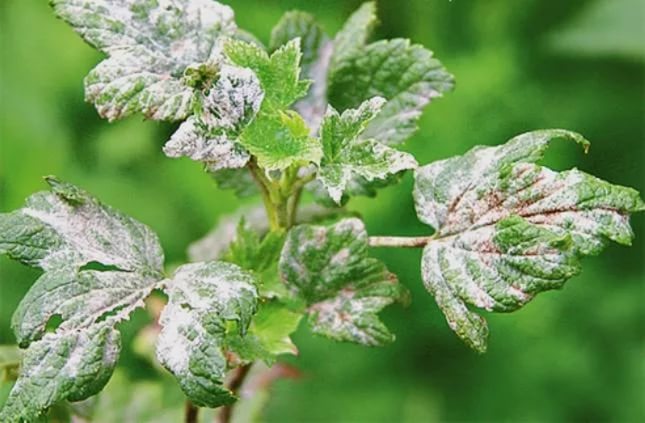
Powdery mildew is one of the most common and dangerous diseases of currants, if you do not fight with it, the bush will die in a couple of years
Having found the first signs, all the affected parts of the plant are cut off and burned as quickly as possible. At an early stage of development, powdery mildew can be dealt with with biofungicides (Baktofit, Alirin-B, Planriz). In severe cases, Topaz, Acrobat-MC, Skor, Raek are used.
For prevention in early spring, currants and the soil under the bushes are sprayed with a 3% solution of Nitrofen. The buds immediately before and immediately after flowering are treated with 1% copper sulfate. During the growing season, once every 1.5-2 weeks, you can use folk remedies - a solution of soda ash, mustard powder, kefir (or whey) decoction of horsetail rhizomes, tansy, infusion of wood ash or garlic arrows. The roots of new seedlings must be kept for several hours in a pale pink solution of potassium permanganate.
The crop can die if you do not take measures to get rid of powdery mildew, and it is even better to carry out prevention on time:https://flowers.bigbadmole.com/en/bolezni-rasteniy/muchnistaya-rosa.html
Video: how to get rid of powdery mildew on currants
Goblet rust
It affects not only currants, but also most fruit trees. The first signs of infection are visible in late May or early June. Small swells of a bright saffron color appear on the inside of the sheet, and thin black-brown strokes on the front side. The affected leaves are deformed and fall off in July. The ovaries dry up. Within a month, the bush can lose 70-80% of the green mass and half of the berries. Hot rainy weather contributes to the development of the disease.
Rust fungus spores use sedge and any coniferous trees as intermediate hosts. Currants should be planted as far away from them as possible, and weeds should be weeded out regularly. Resistant to this type of rust varieties Pulkovskaya, Versailles white, Cantata, Minsk, Golubka, Goliath, Primorsky champion.
For prevention, blossoming leaves, buds and fruit ovaries are treated with 1% copper sulfate. In early spring and about a month after harvest, DNOC and Nitrofen can be used. To cope with the problem, they use HOM, Kaptan, Tsineb.
Columnar rust
The reverse side of the sheet is covered with a continuous layer of orange-brown "fleecy" plaque. Gradually, it turns brown and thickens. On the front side, yellowish spots of irregular shape blur. Affected leaves dry, fall off by August. By this time the bush can lose 25–40% of its green mass. The yield is reduced by half or more. High humidity and frequent rains contribute to the development of columnar rust.
The best prevention is proper care. First of all, the correct feeding. Excess nitrogen in the soil weakens the plant's immunity. But potassium and phosphorus in the right doses, on the contrary, have a positive effect on it. Non-expanded leaf buds are treated with HOM. The procedure is repeated twice more with an interval of 10-12 days. In autumn, currants are sprayed with a 1% solution of colloidal sulfur or Karbofos. Folk remedy - watering the bush in early spring with hot (70–80 ° C) water.
During the season, currants are sprayed every two weeks with an infusion of onion peels, garlic gruel or horsetail rhizomes. When the first signs of the disease appear, the same drugs are used as for the fight against columnar rust.
Video: ways to deal with rust
Root rot
This disease almost inevitably leads to the death of the bush. It is very difficult to notice him in time. At first, the fungus infects the roots, on the aerial part of the plant, symptoms appear only when the process has gone too far. Black spots blur on the roots, they become slimy to the touch, spreading an unpleasant putrid odor. Gradually, blackness spreads to the bases of the shoots (they can be pulled out of the soil without effort), the soil is covered with a layer of mold. The bush stops developing, the leaves fall off, the plant dies. Root rot almost inevitably develops with regular waterlogging of the soil.
It is very difficult to deal with it, so the main attention should be paid to prevention. First of all, this concerns the choice of high-quality planting material. Before planting, the roots of purchased seedlings must be disinfected in a solution of potassium permanganate or any fungicide of biological origin.
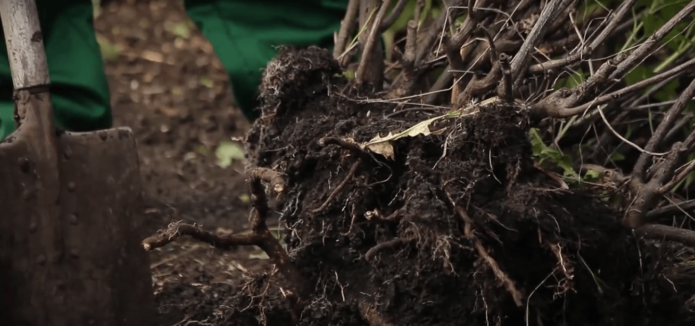
It is almost impossible to notice the appearance of root rot in time, even for an experienced gardener
For prophylaxis, the soil in the trunk circle is powdered with crushed chalk, colloidal sulfur, sifted wood ash. The infected bush is immediately dug up and burned. The soil in this place is spilled with a 5% solution of copper sulfate or Bordeaux liquid.
If the disease was noticed at an early stage, watering is sharply reduced, the water is replaced with a pale pink solution of potassium permanganate. Alirin-B, Trichodermin granules are added to the soil. You can try to transplant young bushes by cutting off all damaged roots and then holding them for at least an hour in a 0.2% Fundazole solution.
Scab
Leaves, berries and shoots are covered with dense brownish-gray spots. Gradually, their surface cracks, buds, flowers and fruit ovaries fall off, the tissues under these spots rot. The bush loses most of its green mass and yield. It is not recommended to eat sick berries. Scab development is promoted by frequent rains and non-compliance with the scheme planting currants in autumn. The denser the currant grows, the faster the fungus passes from diseased bushes to healthy ones.
For prevention, swollen leaf buds, buds and fruit ovaries are sprayed with Fitosporin-M or HOM.In the fall, the soil in the near-trunk circle is treated with a 7% solution of urea or other nitrogen-containing fertilizer. From folk remedies during the growing season, they use an infusion of wood ash, colloidal sulfur, foam of household or green potassium soap. Horus, Aktara are used to combat scab.
Septoria
This fungus, the currant bush, most likely, will not kill, but the yield will decrease by 40-60%. The leaves are covered with multiple small rounded brownish spots. Gradually, their middle brightens, becomes almost transparent, and the border, on the contrary, darkens, changing the shade to brown with a purple tint. Then the disease spreads to shoots and fruits, the surface of the spots is covered with small black dots - clusters of fungal spores. Typically, the characteristic symptoms appear towards the end of summer. The disease spreads from the bottom up.
To combat septoria, Ridomil-Gold and Bayleton are used. As a preventive measure, the bushes are sprayed with 1% copper sulfate or Kuproksat, Oxykhom in early spring and about a month after harvesting. From folk remedies, an infusion of onion or garlic gruel can be used at intervals of about once every two weeks during the season.
Reverse (terry)
A dangerous viral disease, for which there is no cure yet. It develops for a long time, within 4–5 years. The first alarming sign is the lack of fruiting. Then the leaves are deformed (three "lobes" instead of five), darken, coarse, veins thicken. The flowers become double, change color from yellowish to red-violet, the pistil becomes thinner and longer. In hot summers, symptoms are less pronounced, but this does not mean that the virus has disappeared.
Most often, the disease spreads with poor-quality planting material, and the virus also carries a kidney mite. If nothing is done, the crop losses will amount to 70-100%, and in 2-3 years the bush will die.
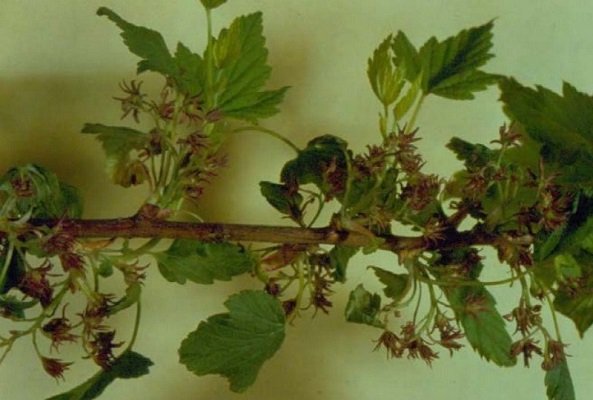
Reverse is a dangerous virus that most often infects red and white currants, there are currently no effective remedies for treating bushes
Bushes should be regularly examined for suspicious symptoms, and infected bushes should be immediately dug up and destroyed. The soil in this place is disinfected by spilling a saturated pink solution of potassium permanganate or 5% copper sulfate. The best prevention is purchasing quality planting material from trusted suppliers. Cuttings and cuttings from new bushes can be taken only after a five-year "quarantine".
Moss and lichen
Shoots of bushes, especially old ones, can be almost completely covered with growths of various shades and configurations. In principle, there is no reliable information that moss and lichen cause any significant harm to currants. The bush for them is only a "fulcrum", their life activity is absolutely autonomous. But by themselves, mosses and lichens are a good breeding ground for the development of many pathogenic fungi and garden pests. They also cause the bark to flake off, trapping moisture on the surface.
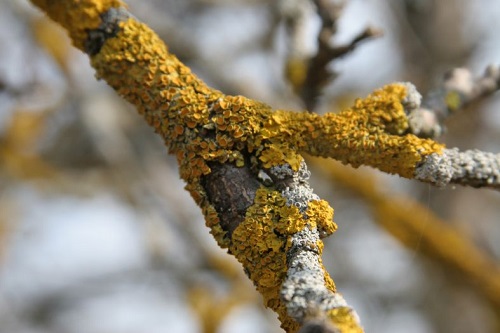
The lichens themselves do not harm the currants, but this is a suitable environment for many pathogenic viruses, bacteria and fungi
Lichens rarely appear if the crown is evenly illuminated and warmed up by the sun. Therefore, correct and regular pruning is very important. For prevention, in early spring and in mid-autumn, currants are sprayed with 1% copper sulfate. Existing growths are carefully cleaned off with a stiff brush, but not a metal one. Then these areas of the bark are washed with the same copper or iron vitriol, the existing cracks are covered with garden varnish or covered with oil paint in several layers. Using a spray gun or a spray gun, shoots are sprayed with an aqueous solution of slaked lime.
Video: how to cleanse shoots from lichens
Often attacking pests
Most pests of currants also attack gooseberries, so these crops, if possible, try to plant as far as possible from each other. There are no particularly "picky" insects that attack only a certain variety of currants.
Currant glass
The main harm to currant bushes is caused by glassy larvae. They damage the shoots by eating away their tissues from the inside. The result is "tunnels" up to 40-50 cm long. Especially often the pest attacks old bushes. The branches become brittle and break easily. They are black when cut.
All shoots with traces of glass damage should be immediately cut off, grabbing another 3-5 cm of tissues that seem healthy, and burned. "Wounds" are disinfected by covering them with a mixture of powdered clay with slaked lime and water or garden pitch. For prevention, the soil in the near-trunk circle is loosened deeply at least once a month, ground red pepper, tobacco chips, mustard powder, and wood ash are embedded in the soil. Cuttings and new seedlings are etched in a solution of Nemabakt, Antonem before planting.
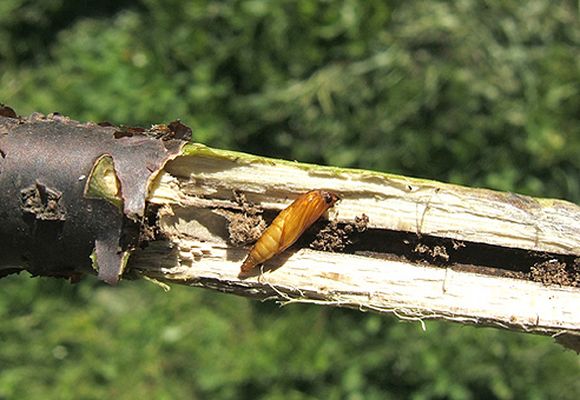
The larvae of the currant glassworm eat out the shoots from the inside, they dry out, they break easily
To scare off adults from the bushes, they are treated with Lepidocide, Bitoxibacillin, and pieces of cloth moistened with gasoline, kerosene, turpentine are also hung nearby. Also, these butterflies really do not like the smell of elderberry. But bird cherry, on the contrary, attracts them to the site. Fitoverm, Iskra Zolotaya, Karbofos are used to combat caterpillars.
Video: ways to deal with currant glass
Sprout aphid
Aphids are an extremely "omnivorous" garden pest that feeds on plant sap. She attacks currant bushes en masse - whole colonies stick to the underside of young leaves, tops of shoots, flower buds and fruit ovaries. At the same time, a transparent sticky coating and a layer of black "dust" (sooty fungus) appear. The affected parts are deformed, the leaves curl, "swell", turn red, dry out quickly. Aphids live in a stable symbiosis with ants, so it will not work to get them out without getting rid of them.
For prevention, currants are watered in early spring with hot water, sprayed with Chlorophos or Entobacterin. Aphids do not like pungent odors very much, therefore, they are effectively scared off by infusions of any spicy herbs, wormwood, yarrow, marigolds, chamomile, tomato tops, lemon peel, onion and garlic arrows. The bushes are sprayed once a week and after every rain. The same folk remedies will help to cope with the pest, if the aphid has not yet multiplied en masse. But the frequency of treatments should be increased up to 3-4 times a day. If there is no desired effect, any general action insecticides are used - Aktaru, Konfidor-Maxi, Inta-Vir, Iskra, Mospilan.
Video: how to get rid of aphids on currants
Currant kidney moth
The larvae of the pest eat away leaf and flower buds from the inside. As a result, the development of the bush slows down, productivity and frost resistance are sharply reduced. If nothing is done, there is no need to wait for berries for next year. Then they switch to the leaves themselves - they "wrinkle", deform, wither, small black dots - excrement - are noticeable in the sinuses. Rarely affected by kidney moth varieties Yadrenaya, Izyumnaya, Dachnitsa, Black Pearl.
Adults are most active in mid-May. They are scared off by spraying the bushes with Lepidocide, or with the help of homemade traps (pieces of bright cardboard smeared with something sticky, containers filled with sugar syrup, diluted honey or jam).
In early spring, the soil in the near-stem circle is sprayed with Karbofos, the unblown leaves - Nitrofen or Fufanon. If there are few caterpillars, you can use folk remedies to combat them - an infusion of rhizomes or horseradish leaves, celandine, tansy, mustard powder. In severe cases, Iskra-Bio, Aktar are used.
Currant kidney mite
It is impossible to see the pest itself with the naked eye, but the buds in which the females laid eggs are clearly visible. They lose their characteristic shape and "swell", growing to the size of a pea. The leaves either do not bloom at all, or they are deformed, very light, rough to the touch. Little buds are formed, the shoots are curved, the bush becomes, as it were, "disheveled".
For prevention, the bush is watered with hot, but not boiling water until the snow has melted. Visible infected kidneys are removed manually. Also, the pest does not tolerate sulfur, therefore, during the growing season, the bushes are sprayed with a solution of colloidal sulfur every 2–2.5 weeks. Folk remedies (strong black tea, infusion of garlic, decoction of cyclamen tubers) do not always help.

The buds, into which the female currant kidney mites have laid eggs, are deformed and sharply increase in size
If the bush is badly damaged (traces of the pest's vital activity are visible on 30-40% of the branches), all shoots are cut off completely, treating the "wounds" with Nitrofen. But this method is only suitable for bushes under the age of six years, it is better to completely uproot the old ones and burn them. Until the pest has multiplied en masse, special preparations can be used - acaricides (Apollo, Nissoran, Oberon, Sunmight). Resistant to kidney mites of the varieties Yadrennaya, Otradnaya, Early Sweet, Pamyat Gubenko.
A bud currant mite lives in the buds, sucks juices from plants, which significantly weakens them and can eventually lead to the death of plantings:https://flowers.bigbadmole.com/en/yagody/smorodina/pochkovyy-kleshch-na-smorodine-mery-borby-vesnoy.html
Spider mite
The pest can be easily identified by the thin, almost transparent filaments, which resemble a spider web, twisting around the tops of the shoots, inflorescences, and bunch of berries. They also settle in the axils of not fully blossoming leaves. Ticks feed on plant sap. The affected tissues are covered with yellowish-beige dots, turn pale, leaves, fruits and ovaries are deformed, dry, fall off. The activity of spider mites increases in heat with low air humidity.
Before the leaves bloom, currants are sprayed with Fitoverm or Kleschevit for prevention. During the season, you can use an infusion of onion or garlic gruel, black henbane leaves or dandelion. If there are still few mites, regular spraying of the bush with plain water can help. They do not tolerate high humidity at all.
Folk remedies in the fight against a pest are ineffective. It is better not to waste time and immediately use specialized drugs - Vertimek, Omite, Apollo. For each subsequent treatment, a new agent is taken. The pest develops immunity very quickly.
Blackcurrant berry sawfly
Sawfly caterpillars can eat a currant bush in a matter of days, depriving it of 60–80% of its green mass. Only veins remain from the leaves. Adults lay eggs in fruit ovaries, choosing the largest berries at the base of the brush. They "swell", darken ahead of time, acquire an unnaturally ribbed shape.
The vast majority of larvae (75–80%) hibernate at the roots of the bush. Therefore, deep loosening of the soil in spring and autumn is an important preventive measure. Shaking them off on an oilcloth, cloth or newspaper spread under a bush gives a good effect.It is best to do the procedure in the early morning when they are least active.
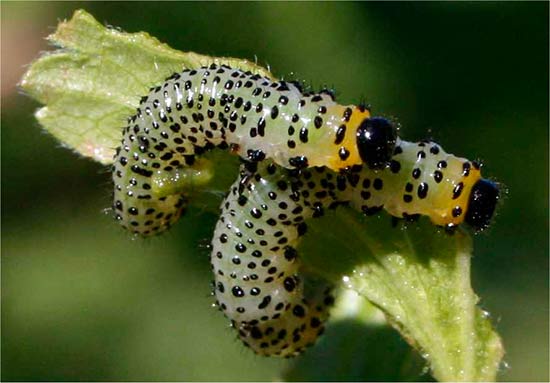
Caterpillars of the blackcurrant berry sawfly are able to eat leaves on a currant bush in just a few days, leaving only veins
Unbroken buds are sprayed with infusion of tobacco crumbs, Actellik or Anometrin. A month after harvesting, the treatment is repeated. Adults are most active during currant flowering. To scare them away, Lepidocide is used. The larvae are destroyed with any general action insecticide.
Gooseberry fire
One of the most dangerous pests for currants. The larvae eat buds and fruit ovaries from the inside, destroying the seeds. Going outside, they braid them with a "web", the berries dry. The gardener can lose at least half of the future harvest. With a massive attack of caterpillars, this figure reaches 90-100%. Most often, currant, which blooms during the period of its greatest activity - Selechenskaya, Sevchanka, Lazy, suffers from fire.
For prevention, before and immediately after flowering, buds and ovaries are sprayed with Aktellik, Kinmiks, Fufanon. During the summer, Fitoverm and Iskra-Bio are used to combat caterpillars. Adults are scared away with the help of an infusion of needles, elder flowers, tobacco chips, mustard powder.
Video: ways to deal with gooseberry fire
Gooseberry moth
Quite a beautiful butterfly, but it causes significant harm to currant plantings. Overwintering caterpillars emerge from their cocoon in early spring and eat leaf buds. They also feed on leaves, eating large holes in the tissues. Often only veins remain from them.
Visible caterpillars are harvested by hand or shaken off on a cloth spread under the bushes. In autumn, the soil in the trunk circle must be deeply loosened and mulched. In the spring, it is advisable to close it with roofing felt or a dense plastic film immediately after the snow melts for 2-3 weeks. If the pest has not yet multiplied en masse, it can be dealt with with folk remedies - an infusion of wood ash, tops of potatoes or tomatoes, onion husks. In severe cases, Dendrobacillin, Lepidocid are used to combat adults, and Karbofos, Inta-Vir, Permethrin are used with larvae.
Currant gall midge
Small insects that resemble mosquitoes. They feed on plant sap. Swelling forms in the damaged areas, then these tissues darken, the surface of the spots cracks, the leaves wither and turn yellow. The peak of pest activity occurs in July-August. Currant yield is reduced by 50-60%.
In early spring, the soil in the trunk circle is sprayed with Karbofos. The treatment is repeated after 6–8 days. To combat adult gall midges, Bitoxibacillin, Lepidocide are used. Also, they are effectively scared off by any infusions with a pungent odor. The larvae are destroyed with general action insecticides.
Regular obtaining of bountiful harvests is possible only if the currant bushes are absolutely healthy. Since it is easier to prevent any problem than to deal with its consequences later, the best prevention is competent care and implementation of all recommendations regarding agricultural technology. Do not neglect the regular inspection of the bushes - if the disease or the appearance of pests is noticed at an early stage, it is much easier to deal with it than in the case when the process has gone too far. In the latter case, the best way out is to get rid of the infected bush, thereby eliminating the source of the problem.
